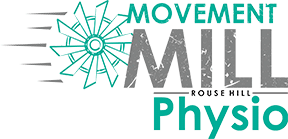Overview
Rotator cuff injuries are a common source of shoulder pain and discomfort, affecting millions of people worldwide. Whether caused by trauma, overuse, or degeneration, these injuries can significantly impact daily life and activities you enjoy doing. In this blog, we provide a comprehensive overview of these injuries, including their causes, symptoms, diagnosis, and treatment options.
The rotator cuff is a group of four muscles and tendons that surround the shoulder joint, providing stability and facilitating a wide range of shoulder movements. These muscles include the supraspinatus, infraspinatus, teres minor, and subscapularis. Understanding the anatomy and function of the rotator cuff is crucial for grasping the impact of injuries to this area.
Rotator cuff injuries can result from various causes, including acute trauma, repetitive overhead motions, and/or age-related degeneration. Additionally, certain risk factors increase the likelihood of developing these injuries, such as age, occupation, sports activities, genetics and underuse.
Recognizing the signs and symptoms of a rotator cuff injury is vital for early detection and prompt treatment. Symptoms may include shoulder pain, weakness, limited range of motion, difficulty sleeping on the affected side, and a clicking or popping sensation during movement.
How Common are rotator cuff injuries?
- 3rd most common musculoskeletal condition
- Every year, 50% of the population will experience an episode of shoulder pain
- Has a lifetime prevalence up to 70%
- 25% of people aged 65+ will exhibit a rotator cuff tear. This increases to 50% when aged 65+
Rotator Cuff and Imaging
Most patients that come to see a physiotherapist have been referred by their GP after imaging has been completed. Interestingly, 40% of people undergoing a rotator cuff surgery will actually have an asymptomatic rotator cuff tear on the other shoulder. A study by Barreto et al found that 96% of men had a pathological finding on imaging when sent for a scan.
When is it a good idea to consider imaging?
- Traumatic onset of shoulder pain
- Severe weakness (inability to lift arm) or paresthesia
- Suspected fracture, dislocation, frozen shoulder
- If you feel it will give you a piece of mind
Assessments
Medical professionals employ a range of diagnostic techniques to identify rotator cuff injuries accurately. These may include physical examinations, imaging tests like X-rays, MRI scans, and diagnostic injections. Understanding the diagnostic process can help individuals navigate their medical appointments more effectively.
Treatment/Management
Many of these injuries can be effectively managed without surgery. Non-surgical treatments may involve rest, ice, physical therapy, nonsteroidal anti-inflammatory drugs (NSAIDs), corticosteroid injections, and modified activity levels. Rehabilitation exercises play a crucial role in strengthening the rotator cuff and restoring shoulder function.
For severe rotator cuff injuries or cases where non-surgical treatments prove ineffective, surgical intervention may be necessary. The different surgical options can be discussed with an orthopaedic specialist/surgeon.
Rehabilitation following a rotator cuff injury or surgery is essential for regaining strength, range of motion, and functionality. Physical therapy is often prescribed to gradually increase strength and flexibility through targeted exercises. Rehabilitation protocols and exercises will depend on the severity of the injury and individual patient needs. They will incorporate a range of different movements such as pushing, pulling, rotating, lifting, carrying and raising.
Have any questions or concerns? Feel free to contact us or book an appointment with one of our physiotherapists or exercise physiologists.
